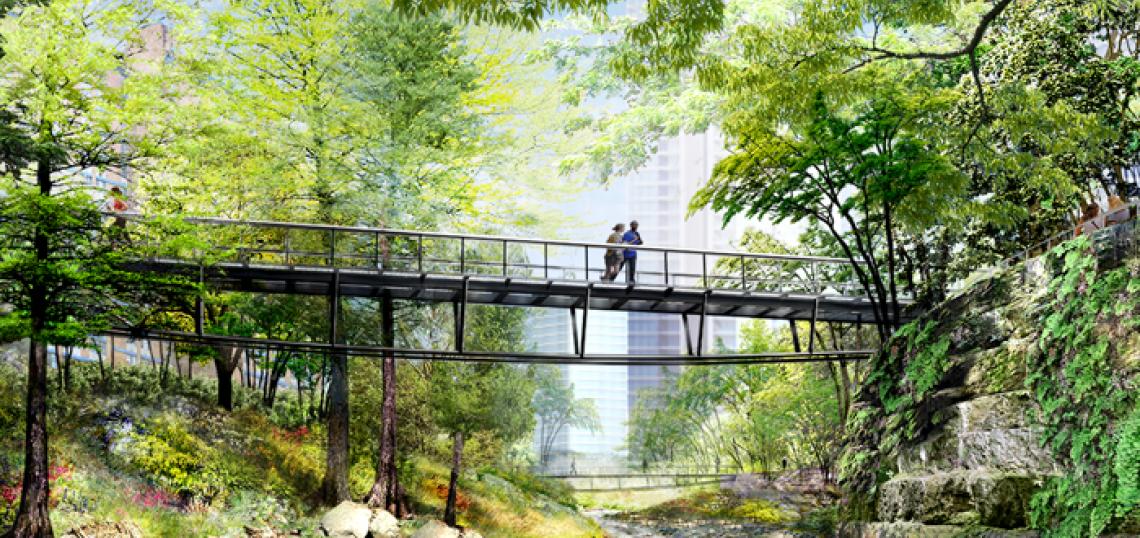Construction on a series of lattice bridges on Waller Creek starts this month, kicking off the first in a series of detours on the Ann and Roy Butler Hike and Bike Trail. Waterloo Greenway, the nonprofit in charge of the 1.5-mile linear park being built on the creek, urges trail users to to slow down and be prepared to stop when approaching Waller Creek for the next several months.
The bridges are part of the second phase of Waterloo Greenway construction. The project includes three lattice bridges that will provide new east-west connections over the creek, an elevated walkway connecting Palm Park to the hike and bike trail, a new lagoon overlook and leaf deck adjacent to Ladybird Lake, the Lakeview Terrace and Explorers Garden, and a new connection to the creek at Fourth with the Cypress Grove and Trailhead Plaza.
The first detour starts July 22 and lasts through the end of August, weather permitting. It will route trail users to a temporary, fenced, crushed-granite trail just east of the existing bridge and over the creek.
Bicyclists and pedestrians might need to stop periodically at the direction of a flagger to allow construction traffic to cross the trail. Work hours are 7 a.m.- 7 p.m. Monday through Friday, with occasional weekend work. Gates will keep trail users separate from vehicular traffic.
While the first detour is in place, construction crews will be installing a lattice bridge and preparing a temporary creek crossing for later detours. Subsequent detours will differ on the route over the creek.
The Confluence comprises 13 acres along Waller Creek from Fourth Street to Lady Bird Lake. The project allows for a continuous, off-street, bike and pedestrian trail between the Ann and Roy Butler Hike and Bike Trail and East Fourth Street; stabilizes the creek bank; improves water quality; and provides access to nature, according to Waterloo Conservancy. Construction began in May 2023 and is expected to be complete by spring 2026.
The Confluence is funded by the city of Austin, Waterloo Greenway Conservancy, and the U.S. Army Corps of Engineers. The estimated construction cost, including contingencies, is $75 million.






